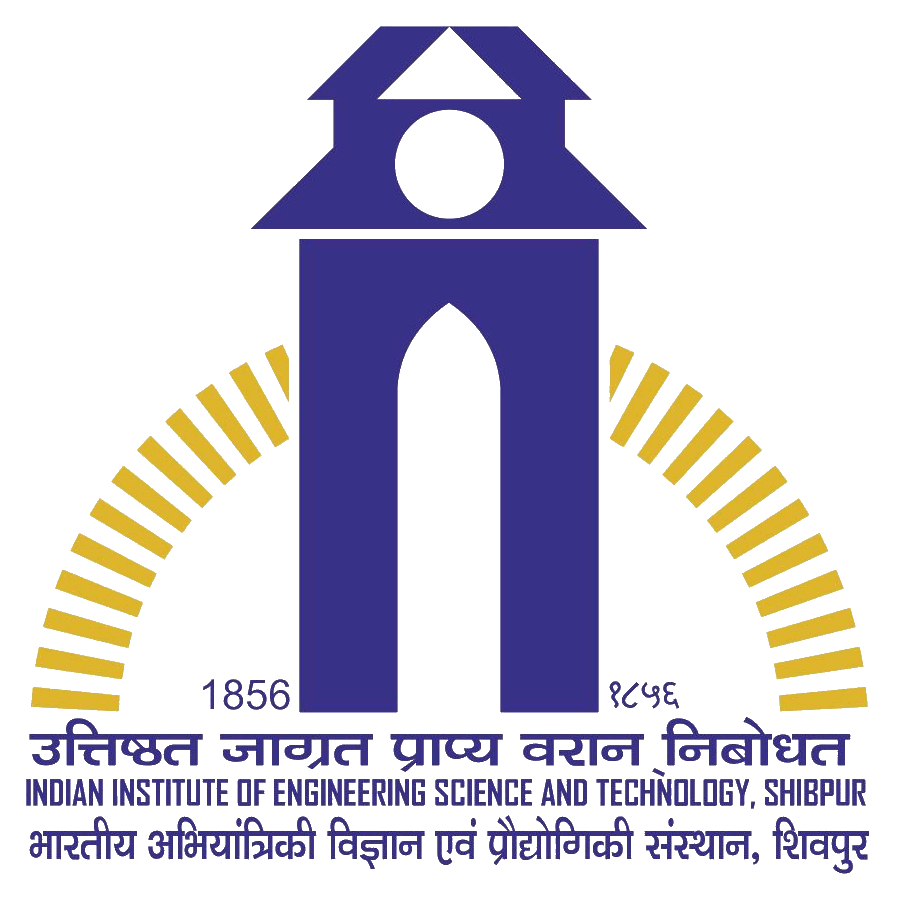Research Highlights
Nanopatterns are formed on the aluminium surface by electopolishing for fabrication of nanoelectronic devices, circuits and miniaturizing logic gates. The microscopic origin of the nanopattern formation was traced by combining experimental evidences with ab-initio atomistic modelling.
AFM image of nanostripe patterns created on the surface of electropolished Al
Some of the other notable research that are currently being undertaken are Photonics of nanowires and nanorods Zinc oxide nanowires and Zinc oxide/ carbon nanotube hybrid nanowires are fabricated by using nanoporous anodic alumina template. The photonic, field emission and photovoltaic properties of these multifunctional nanowires/nanorods are presently being investigated to assess their possible application in field emission devices, solar cells and as photo-luminescent materials.

SEM image of the anodic alumina template

TEM image of nano porous anodic alumina template

Optical micrograph (500X) of 25% (Fe-aluminide + Al2O3) reinforced
Al composite prepared in the laboratory by melting and casting route.
Iron oxide nanoparticles is considered to be an important material from the viewpoint of its potential usage in ultra high density magnetic storage media, ferrofluids, electronic sensors, magneto optical devices, catalytic converters (conversion of CO to CO2 at low temperatures) biomedical devices (high resolution magnetic resonance imaging) and guided drug delivery system for cancer cell therapy. However, for device application it is essential that the size distribution should be very narrow and contain only the desired phase so that all of them can switch/respond identically.
Iron oxide nanoparticles with narrow size distribution were synthesized from a homogeneous nonaqueous staeric acid and iron nitrate medium by thermal decomposition at 300oC.The developed technique is a low temperature process, simple and requires no sophisticated instrumentation. Keeping in mind, the application of the oxide nanoparticles in devices,detailed investigations on the phase stability, magnetic properties, kinetics and crystallographic transformation of iron oxide nanoparticles is being investigated.
Recent research work related to the removal of arsenic from ground water by using functionalized iron oxide nanoparticles have yielded encouraging results and have been found to be very effective in the removal of high doses of arsenic.

TEM image of the as prepared γ-Fe2O3 nanoparticles
In-situ glass metal nanocomposites currently recognized as a new class of materials that have gained considerable importance due to their remarkable physical properties. However, the physical properties of these nanocomposites have been found to vary as a function of shape, size, distribution and amount of metallic species incorporated into the host glass matrix. Previously these nanocomposites were prepared through the sol-gel route by reducing metallic salts in the gel matrix by passing H2 from outside. The process suffers from some serious limitations e.g. slow reduction kinetics of metal salts within the gel matrix and difficulty in estimating the exact amount of metal salt reduced to metal in the host matrix leading to uncertainties in designing and tuning their properties for device application. The nanocomposites prepared through the above route also exhibit wide variation in shape and size of the metallic islands causing inconsistency in the results of physical characterization rendering these nanocomposites unsuitable for device application. In the context of the above perspectives a process capable of generating H2 in-situ and reducing the metallic salts at the site is developed by incorporating dextrose as reductant along with the metal salt in the glass matrix. The in situ reduction of the metal salts within the matrix triggered remarkable improvement in the process kinetics. Research results have show that the morphology (shape, size) of the metallic islands in the host glass matrix can be controlled by controlling the kinetic parameters e.g. temperature, time, heating rate and composition. A statistical assessment of the influence of the above parameters has also been made.

In-situ Co/SiO2 nanocomposite prepared via sol-gel route
Nanocrystalline Cu-(Fe,Ni,Co)binary,ternary and quaternary alloys
Nanocrystalline hard and soft magnetic phase(s) dispersed in nonmagnetic matrix yield a wide range of magnetic properties of technological interest. Genesis of the magnetic properties in such materials of composite microstructure are attributed to the coupling among the hard and soft magnetic phases and separation of magnetic moments by nonmagnetic phases giving rise to spin dependent scattering of conduction electron(s) at the interface as well as within the dispersed phases. The binary, ternary and quaternary copper based alloy systems comprising nanodimensional dispersions of Ni, Fe, Co, FeNi and FeCo phases in the nonmagnetic copper matrix by virtue of their tailorable magnetic properties are potential candidates for application in listening devices and sensors. The microstructural features and magnetic properties of the alloys are corelated and it is shown that the magnetic properties of these nano dimensional phase dispersed copper alloys can be controlled precisely by controlling the composition, microstructural constituents, grain size, crystal defects and processing conditions.

High resolution transmission electron image of Cu50Ni25Co25 prepared by mechanical alloying.

